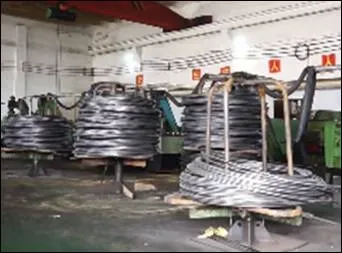Dic . 14, 2024 01:20 Back to list
Dimensions of Heavy Hex Nuts and Their Specifications for Mechanical Applications
Understanding Hex Heavy Nut Dimensions A Comprehensive Guide
Hex heavy nuts are a vital component in the mechanical fastening world, commonly used in construction, manufacturing, and automotive industries. Their significance lies in their ability to secure components, withstand high levels of stress, and accommodate higher torque loads compared to standard nuts. In this article, we will delve into the key dimensions of hex heavy nuts, exploring their size specifications, the standards governing their production, and their applications in various industries.
What is a Hex Heavy Nut?
A hex heavy nut, often referred to simply as a heavy nut, is a six-sided fastener that is thicker and stronger than a regular hex nut. They are typically made from durable materials like steel, stainless steel, or other alloys, designed to offer superior tensile strength and resistance to deformation under heavy loads. The ‘hex’ shape allows for easy gripping with tools, enabling efficient installation and removal.
Key Dimensions of Hex Heavy Nuts
When it comes to dimensions, hex heavy nuts are defined by several important measurements
1. Width Across Flats (WAF) This is the distance measured across two opposite flat sides of the nut. It is critical for ensuring the proper fit with corresponding bolts and for accurate torque application.
2. Thickness The thickness of the nut influences its strength and load-bearing capacity. Heavy nuts are designed to be thicker than standard hex nuts, allowing them to resist shear and tensile forces more effectively.
3. Nominal Size The nominal size of a nut refers to the size of the bolt it is designed to fit. This is often indicated in fractions of an inch (e.g., ¼ inch) or in millimeters (e.g., M12). Understanding the nominal size is essential for pairing nuts with the correct bolts.
4. Thread Pitch Thread pitch refers to the distance between threads and is critical for ensuring that the nut fits properly onto the bolt. Coarse and fine thread options exist, with each suited for different applications.
5. Material and Finish The choice of material and surface finish (e.g., galvanized, anodized) affects the nut's durability, corrosion resistance, and overall performance in various environments.
Standards Governing Hex Heavy Nut Dimensions
hex heavy nut dimensions

Hex heavy nuts are manufactured according to specific standards to ensure interoperability and reliability. Some of the most common standards include
- ANSI/ASME B18.2.2 This standard outlines the general specifications for hex nuts and includes detailed dimensional guidelines for heavy nuts, ensuring they meet the necessary strength and quality requirements.
- ISO 4032 Internationally, this standard provides specifications for hex nuts and includes variation for heavy types, focusing on dimensions, tolerances, and material specifications
.- ASTM A563 This standard pertains to carbon and alloy steel nuts and includes guidelines for heavy nuts, emphasizing the mechanical requirements necessary for high-performance applications.
Applications of Hex Heavy Nuts
Hex heavy nuts are utilized in a plethora of applications across various industries. Their robustness makes them ideal for
- Construction In structural steel assembly, heavy nuts secure beams and columns, ensuring stability and safety in buildings.
- Aerospace Due to stringent safety standards, hex heavy nuts are often used in the assembly of aircraft components, offering reliable fastening solutions that can withstand extreme conditions.
- Automotive In vehicles, these nuts are commonly found in engine components, suspension systems, and chassis, where high-strength fastening is essential to handle vibration and force.
- Industrial Machinery Heavy nuts play a crucial role in machinery assembly, particularly in manufacturing equipment, where they endure significant wear and tear.
Conclusion
Understanding the dimensions and applications of hex heavy nuts is vital for anyone involved in industries where mechanical fastening is critical. Their unique specifications ensure they can handle demanding tasks, providing safety and reliability in various applications. Whether for construction, aerospace, automotive, or industrial settings, hex heavy nuts are indispensable, turning complexity into engineered simplicity. By adhering to established standards and choosing the right dimensions for specific projects, engineers and technicians can ensure optimal performance and longevity in their fastening solutions.


